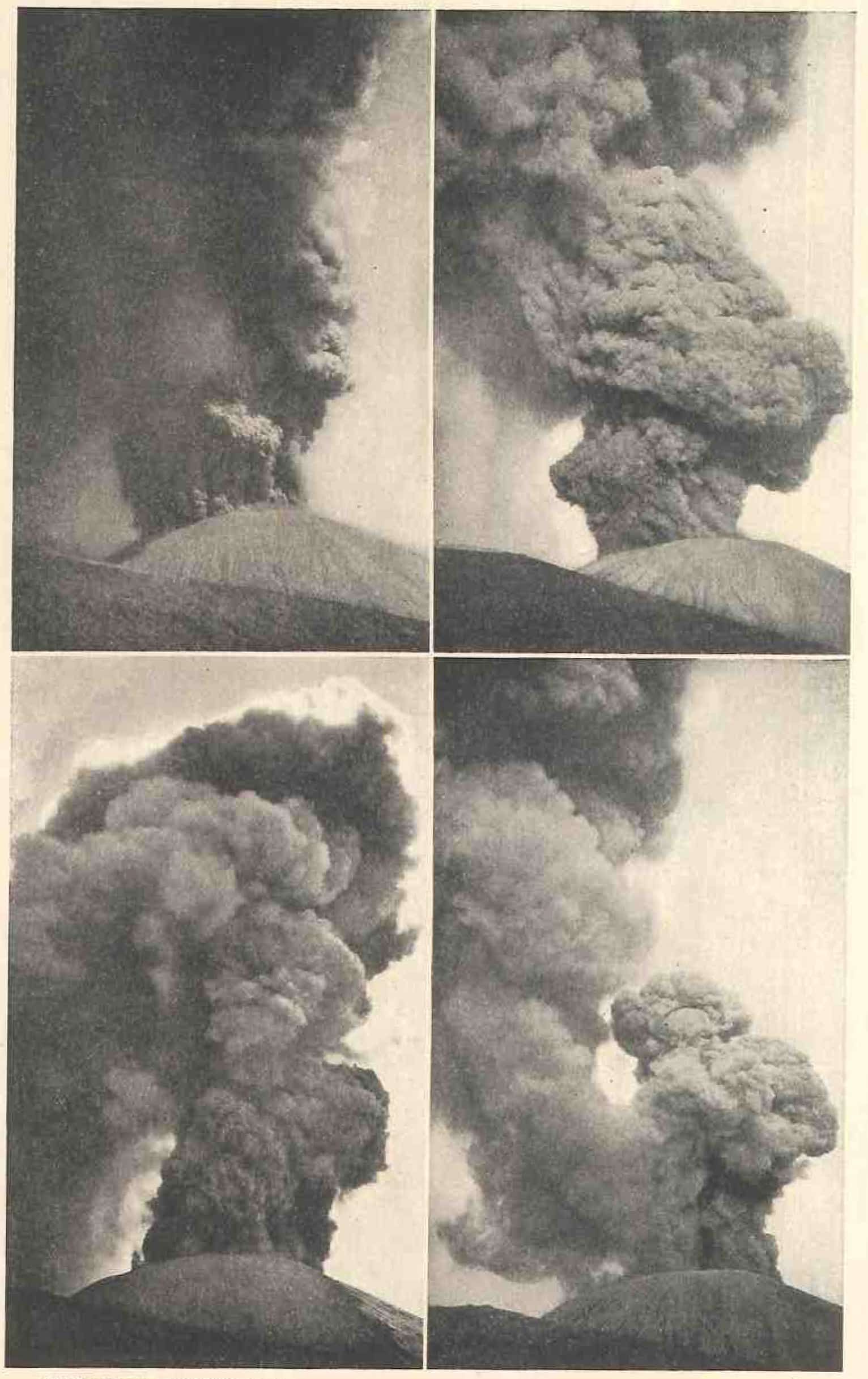DMJ – The Sound of Magma: Geographies of Infrasound, Vibrating Bodies, and Representing the Earth

Frank Perret, Vesuvius Eruption of 1906: Study of a Volcanic Cycle (Washington: Carnegie Institution of Washington, 1924), 54, frontispiece.
What does the inside of the earth sound like? Do continental margins have a signature key? Does magma whistle? These questions preoccupied the scientist Frank Perret in the early 20th century as he sought to develop the new science of volcanology. For Perret, though, listening to the earth was not only a matter of the ear, it was of the entire body, and it was a form of drawing. He placed his body in dangerous proximity to erupting volcanoes to register their waves and shudders through his skin; he bit objects to amplify tremors through his skull; and he made new listening devices to hear the subterranean heaving of rocks. Bound up with this extensive experimental listening to the barely audible underground were experiments with recording on wax cylinders, diagramming, seismograms, and photography. He conceived of his body as a medium among mediums. Perret’s work is generally unknown outside histories of volcano science, but it reveals the crucial and often unrecognised interdependence of listening, inscription, and the human body in the emergence of modern theories of the earth. Recuperating from a nervous breakdown in New York in 1904, Perret went to Vesuvius and joined the volcano observatory. He then played a key role in establishing the first volcano observatory in Hawaii and the volcano museum in Martinique at the base of Mount Pelée. On Vesuvius he transformed the observatory building into a microphone. On Pelée, he inserted listening devices into river-banks to hear explosions in the distant crater before debris hit the town. He heard convergent plate boundaries in the Caribbean and mapped them before the theory of plate tectonics named them. Perret envisioned volcanology as a ‘new and greater science’ of the ‘living earth’ that would attend to its dynamic, unpredictable and interdependent systems. The human body was a key medium for those systems. Attending to Perret’s work reveals the early history of what would later be called planetary infrasound, sound waves that are at too low a frequency to be registered by the human ear though they traverse the earth. During the Cold War, global infrasound networks emerged from Perret’s efforts. The networks aimed to monitor the use of nuclear weapons and volcanic explosions. Infrasound also became associated with distinctly modern forms of industrial anxiety. Sicknesses such as vibro-acoustic disease named the negative effects that industrial technologies could have on the sensitive human body through vibrations. As much as Perret was interested in the human body as a medium for sound, he was also the product of 20th-century concerns over an increasingly vibratory, tremulous society. Reconsidering Perret’s work not only sheds light on the modern history of volcano knowledge and the earth sciences but on how bound up ideas of the earth and the human body have been in the 20th century.
DMJournal–Architecture and Representation
No. 1: The Geological Imagination
ISSN 2753-5010 (Online)
About the author
Adam Bobbette is a lecturer in Political Geology at the University of Glasgow. He is the author of The Pulse of the Earth: Political Geology in Java (Duke) and co-editor of New Earth Histories: Geo-Cosmologies and the Making of the Modern World (Chicago)and Political Geology: Active Stratigraphies and the Making of Life (Palgrave). His essays have been published in the London Review of Books, TLS, Perspecta, N+1, and Cabinet.

